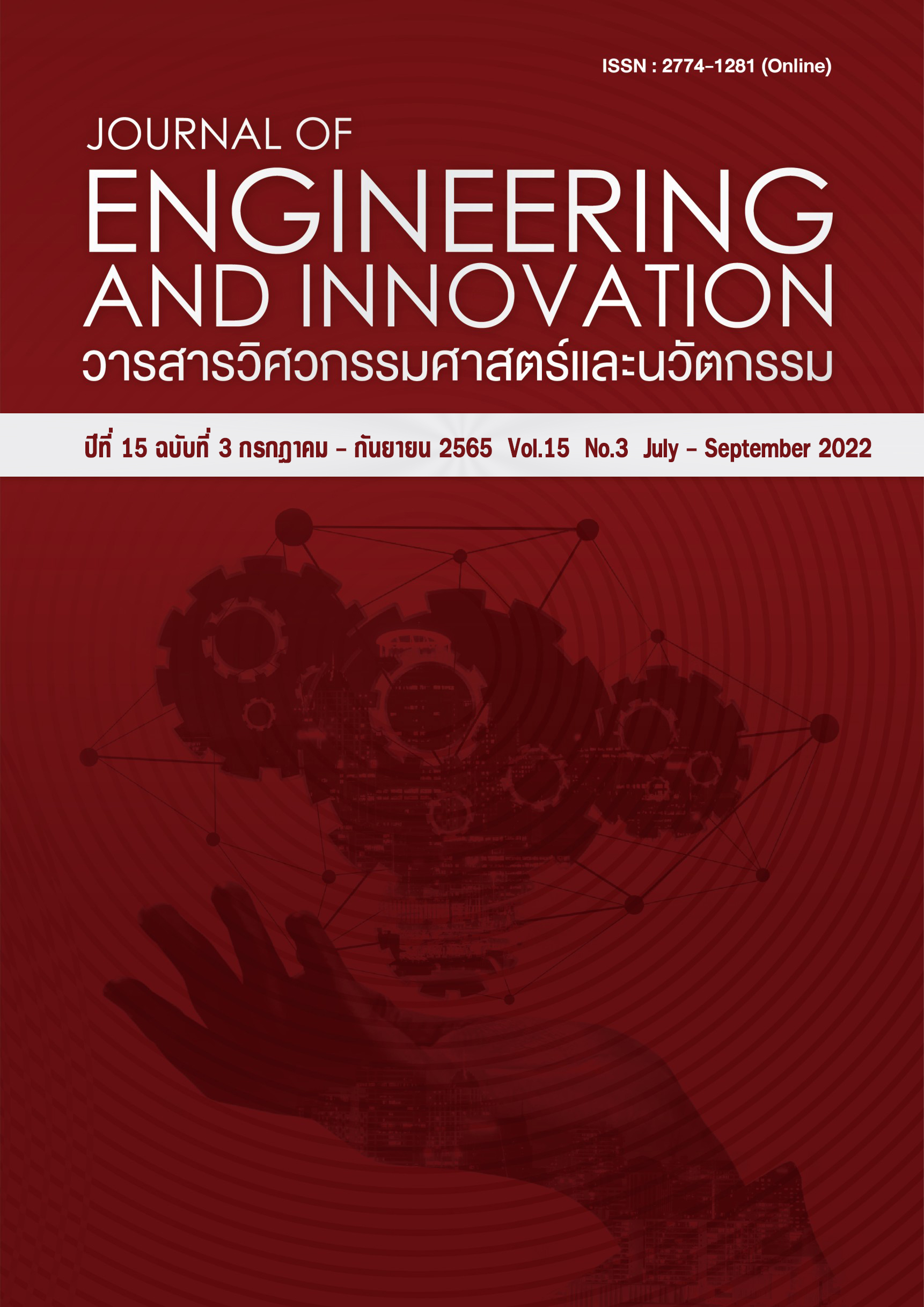Development of a remote control accessory for an infusion pump
Main Article Content
Abstract
Although push buttons for settings or control are used in several devices, remote control can make them more convenience and improve safety, for example, those devices are located in dangerous areas or are inaccessible. Therefore, the objective of this research work is to develop an accessory that can be attached to a parent device, enabling it to be controlled remotely. In this research work, the parent device is an infusion pump since it is used for patients who are treated in an isolation room, e.g., tuberculosis or COVID19. The developed accessory extends the capability of the old version, resulting in budget reduction for purchasing a new version with remote control. The accessory consisted of five parts: an attachment kit mounted to the parent device, a controller with a camera module used for live streaming, web server and process control of the accessory, a push-button pressing mechanism, a light transporter for an LED status indicator of the parent-device, and a smartphone for remote control. The user can see the display of the parent device on the smartphone and can touch the screen of the smartphone in order to control the accessory via a wireless network. The experimental results showed that the accessory was able to be attached to the existing infusion pump in the hospital properly. The flow rate was adjusted remotely. All alarms, flow rate and an LED status indicator can be seen via the screen of the smartphone. Thus, the accessory developed in this research work can make medical professionals’ work more convenient and more secure.
Article Details
References
Vitoux R, Schuster C, Glover K. Perceptions of infusion pump alarms. Journal of Infusion Nursing. 2018;41(5): 309-318
Moon Y, Kim D, Jang W, Lee S. A study of remote control for home appliances based on M2M. In: Kim T, Ma J, Fang W, Zhang Y, Cuzzocrea A. (eds) Computer Applications for Database, Education, and Ubiquitous Computing. Heidelberg, Springer; 2012. p. 198-203.
Seelye AM, Wild KV, Larimer N, Maxwell S, Kearns P, Kaye JA. Reactions to a remote-controlled video-communication robot in seniors’ homes: A pilot study of feasibility and acceptance. Telemedicine Journal and E Health. 2012;18(10): 755–759.
Keil-Slawik R, Plaisant C, Shneiderman B, Remote direct manipulation: A case study of a telemedicine workstation, Proceedings of the 4th international conference on Human-Computer Interaction (HCI), 1-6 September 1991, Stuttgart.
Ahlrichs C, Samà A, Simon JR, Herrlich S, Rodrıguez-Molinero A. Help: optimizing treatment of Parkinson's disease patients, Proceedings of the 3rd International Conference on the Elderly and New Technologies, 18-20 April 2012, Castellón, Spain.
IRadimed Corporation. Introducing the 3860+ MRI IV infusion pump system. Available from: http://www.iradimed.com/en-us/products/mridi um3860 [Accessed 26th September 2020].
Drumea A, Vasile A, Vulpe V, Svasta P. Remote control module for infusion pump medical device, Proceedings of the 30th International Spring Seminar on Electronics Technology (ISSE), 9-13 May 2007, Cluj-Napoca, Romania. IEEE; 2007. p. 517-520.
Grossmann U, Schiessl C, Jatoba L, Ottenbacher J, Stork W, Mueller-Glaser K. Securely control infusion pumps via Internet for efficient remote therapy of pain. In: Magjarevic R, Nagel JH (eds) World Congress on Medical Physics and Biomedical Engineering 2006. Berlin Heidelberg, Springer; 2007. p. 421—423.
สาธิต นฤภัย, กุลญนาท ผ่องแผ้ว, สมศักดิ์ จันทมาศ, ศักดิ์ชาย ท่าทราย, จิรชัย สมนึกขวัญดี. การประเมินประสิทธิภาพด้านการใช้งานชุดนําสารละลายที่ใช้กับเครื่องปั๊มของเหลวเข้าสู่ร่างกาย. รายงานการวิจัยกรมสนับสนุนบริการสุขภาพ กระทรวงสาธารณสุข, 2555. เข้าถึงได้จาก: http://medi.moph.go.th/km/iv/ [เข้าถึงเมื่อ 26 กันยายน 2563].

